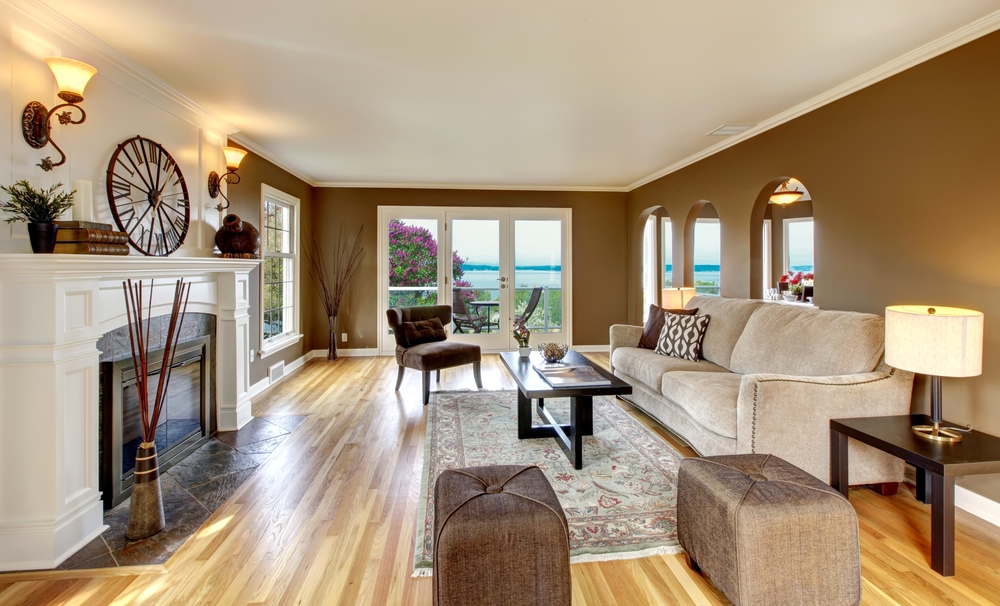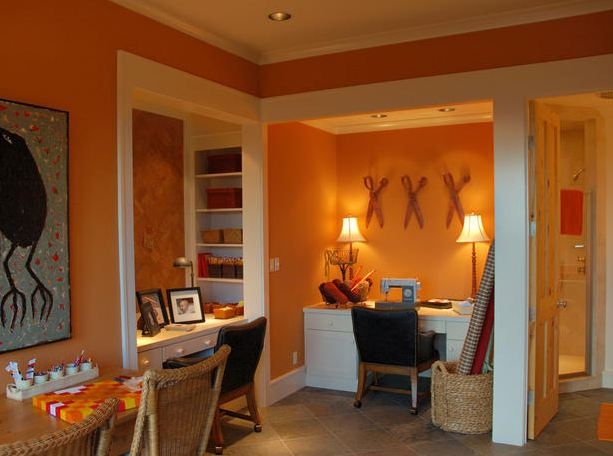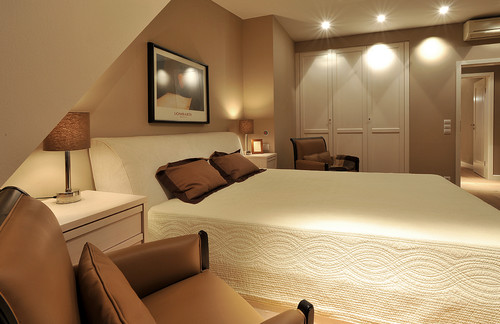One 21st Century value we cherish as homeowners is the idea of living in a home that reflects us, that one’s home should be defined by the rules that one sets for oneself, not by received wisdom.
Yet, when trying to sell a home in a market that is very slow moving (to say the least), traditional strategies of planning a one-size-fits-all approach to interior design tends to sentence us to a life in a home with no personality.
But there are ways and means of finding a balance. And there are ways to stick to the traditional home stager advice of de-personalizing a space enough to welcome a prospective buyer without having to live on Planet Beige. To help outline this discussion, guest writer Tali Wee is here to inject some personality to the whole de-personalized question.
Throughout the past few decades, home staging has made its way from fringe circles to the mainstream. The cause for this movement is likely due to the fact that home staging can significantly increase a home’s resale value. It’s particularly beneficial for sellers of homes with excessive clutter or outdated architecture.
In today’s somewhat tepid housing market, sellers often find themselves living in a depersonalized house indefinitely. As they wait for the house to sell, they may feel like they are living in someone else’s home. How can sellers combine traditional home staging advice with their own unique style so that it’s comfortable and universally appealing? Here are five ideas you can take from staging to create a home that is both sellable and livable.
House appropriate colors
Few things turn away potential buyers quite like loud, unusual colors. That’s why home stagers usually recommend painting and decorating with neutral colors. For home sellers with more vibrant tastes, that doesn’t have to mean sticking to tan or white (though they’ll certainly work well).
As this guide shows, subtle shades of earth tones like brown, blue, green and even some reds will do well in rooms with a lot of glass, wood or stone. Coffee-colored wall paint can bring out the full color of hardwood floors. With so many colors available on the palette, sellers shouldn’t settle for a color that doesn’t feel right.

Image via Shutterstock
When sellers paint their home exterior, they should keep in mind the character of the neighborhood. While beige will do an excellent job of highlighting the lush greens of nearby trees, such a muted color might not work as well for a Victorian home. Bold colors can be used to highlight architectural features.
For those vibrant-minded sellers who just can’t say no to exciting colors, there’s still one last solution. Choose more neutral colors for permanent features, such as the walls or exterior, and save the color for accents, such as pillows, couches and other touches that the buyer can easily change. By painting neutrally and accenting boldly, sellers can keep a touch of the colors they love without giving the prospective buyer a redecorating hassle.
Unlocking Creative Potential
Despite what the traditional advice might say, de-personalization is only partially essential to home staging. Many prospective buyers will, for instance, turn away when they see political posters plastered around a study as decoration or a wall covered in leopard print. But, without any personal touch, staged homes can be miserable for sellers to live in, and unwelcoming for buyers.
As a compromise, sellers benefit from a little strategic personalization. Browse through design catalogs to gather ideas for themes and welcoming creative touches. Particularly target the spare room that’s just gathering dust and junk, like this example.

By adding a few cozy chairs, making the most of those nooks and adorning the walls with cute scissors and a creative painting, decorators achieve a room that’s homey and livable for sellers and universally appealing to prospective buyers.
Just a hint of personalization will likely spark other creative ideas in the minds of prospective buyers, who might customize the space into a study or yoga studio. Ultimately, a little touch of personality is more liberating than complete de-personalization. Conveniently, it’s better for sellers too.
Maximize Space
The last thing prospective buyers want is to step into a home that reminds them of the mess and clutter of their own homes. Sellers will benefit personally when they de-clutter their space. They can add extra storage with a storage system, new shelves in a closet, a new closet altogether, better-equipped attic or basement space, or added space beneath the stairs.
There are also a myriad of ways to make small spaces look bigger. Homeowners should start by painting small spaces the same color as the adjoining room. Keeping the hue light is also a great technique. Take advantage of narrow shelving and hang curtains high to make windows look bigger. Prospective buyers will feel like they’re looking at a home with a higher square footage value, while sellers will feel they’re living in a relaxed, breathable space.
Install Warm Lighting
Adding light is a simple fix, and one that’s often overlooked. Making a few adjustments to a home’s lighting will make prospective buyers feel welcome, while cheering the moods of sellers. Use softer lamp lighting in cozy nooks and track lighting to highlight notable features on the walls or ceilings.
 Traditional Bedroom design by Other Metro Architect Pavel Burmakin
Traditional Bedroom design by Other Metro Architect Pavel Burmakin
Keep things creative and personal by choosing unique lamps and light fixtures to place throughout the house, aiming for a total of 100 watts for every 50 square feet. Sellers will find that better-lit homes will be instantly more livable and easy on the mood.
Turn outdated eyesores into unique features
Unfortunately, popular design trends go out of style. When they do, the trendy home’s resale value can plummet. Sellers can use these outdated features to their advantage with a little DIY elbow grease. An overpowering brick fireplace can be painted to match the walls, and a little antiquing can create a unique scene from another era.
Dated tiles and cabinets can also be painted, stained or replaced. Sellers of older homes should consider highlighting their homes’ original features. Display old-fashioned phones and other relics as conversation pieces. Or, re-purpose old furniture and appliances into decorative pieces. For instance, an old icebox might work well as a coffee table. Buyers will love the creative touch, and sellers will find themselves having fun as they rediscover the past.
Take-Away
Complete de-personalization is no longer the norm in home staging. Many buyers are sick of sterile spaces and the one-size-fits-all mentality. Adding a little bit of personality in all the right places will not only make homes more appealing to prospective buyers, but will also keep sellers happy in their homes throughout the selling process.
Thanks, Tali!
Tali Wee currently lives in Seattle where she handles the Houston community outreach for Zillow. She is captivated by and appreciates everything real estate related. Tali is also a new homeowner and enjoys spending time on projects around the house.





